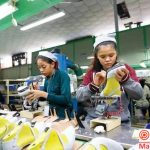The Development Of Zhejiang Textile Industry Is On The Way
Over the years, China Zhejiang leveraged the block economy, forming a unique “Made in Zhejiang” industrial advantages, more than 70 manufacturing clusters in China’s domestic market share of more than 30%.
Textile, is one of the traditional advantageous industrial chain in Zhejiang Province. It is closely related to life, string chemical fiber, weaving, printing and dyeing, chemical, textile machinery, clothing and other links, traction Shaoxing, Jiaxing, Ningbo, Hangzhou and a number of upstream and downstream enterprises, the formation of a more complete textile industry chain.
Zhejiang Textile Industry Remains Stable Under The Epidemic
Under the impact of the epidemic, a more complete and stable China Zhejiang modern textile industry chain has withstood the test
In the first half of 2020, Shaoxing textile industry stepped out of the unusual “positive line”, Shaoxing five traditional industries on the added value of enterprises reached 6 billion U.S. dollars, an increase of 2.9%, accounting for more than half of the credit of the textile industry. Among them, the added value of chemical fiber industry grew 6% year-on-year.
“This is closely related to the advantages of industrial clusters, stable chain.” The person in charge of the relevant introduction, the upstream of this industry chain, Keqiao, Shengzhou, Shangyu has China’s well-known chemical fiber, silk, cotton yarn and other raw materials production enterprises; midstream, Keqiao blue print fashion town, gathering 108 printing and dyeing enterprises, production capacity of more than one-third of China.
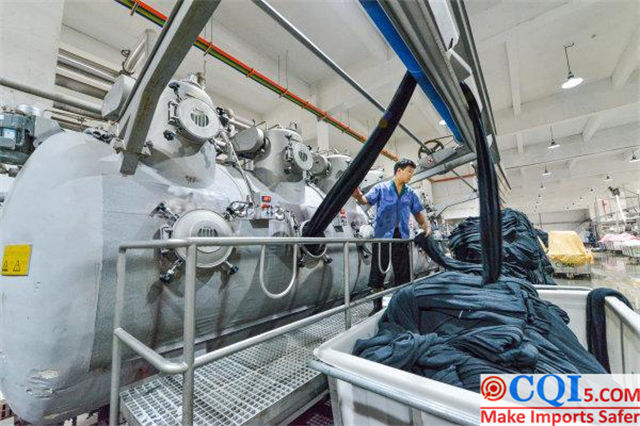
downstream, Keqiao’s fabrics, Zhuji’s hosiery, Shengzhou’s tie and other industrial clusters, staggered development. In recent years, Shaoxing has also further clarified the layout of the modern textile industry with Keqiao as the center and Zhuji and Shengzhou as the linkage development.
And “one step away” from Shaoxing, Jiaxing, Hangzhou, Ningbo and other places gathered chemical fiber, weaving, home textile and clothing and many other enterprises. The clusters are closely linked and complementary to each other, together forming the “central axis” of the modern textile industry chain in Zhejiang.
Zhuji, Datang Street, with more than 10,000 enterprises and an annual output of more than 27 billion pairs of socks, is one of the “hearts” of the global hosiery industry.
With the latest design in town, you can purchase yarn, find a foundry and logistics provider. The raw materials arrive, the sock machine starts, and the new socks are online the next day. If you have new needs for raw material research and development, product testing, etc., you can also go to the local industrial innovation service complex, Datang Sock Art Town, and seek assistance from experts stationed at universities and research institutes.
This is the familiar daily routine of the head of the production department of Zhuji Karamera, and epitomizes the local close collaborative production method. This approach, which greatly improves the efficiency of the supply chain, also gives upstream and downstream enterprises a stronger sense of security. “Is there any link broken, which kind of material is missing?‘’ Almost all got a negative answer. A number of business leaders believe that “the textile industry chain is safer.”

Although orders were somewhat affected by the impact of the epidemic, the stable supply has enabled many companies to grow against the trend. In the first half of this year, Caramela’s sales exceeded $15.87 million, an increase of more than 25% year-on-year, attracting Huarui Investment, which has been inclined to the new technology sector, to invest $7.93 million in it.
What Will Be The Main Competition Of Zhejiang Textile Industry In The Future
The competition of the future industry is the competition of the whole industry chain, and the latter is composed of the various supply chains. The epidemic occurred asynchronously in different regions and countries, which led to the uncoordinated or broken supply between upstream and downstream supply chains in the organization of production of many enterprises, and everywhere is rethinking how to better coordinate the contradiction between economic efficiency and economic security in the process of participation in globalization, and the production organization of manufacturing industry has gradually evolved from globalized procurement to a domestic cycle in China as the main body and a domestic and international double cycle “pattern.
pay more attention to independent innovation, to the core technology of the industrial chain, the future competition of the industry will also turn to the competition between industrial clusters, modern textile industry, not only closely linked to social needs, but also the initial realization of the ‘endogenous cycle’ to drive the external cycle, and promote each other become an important choice for us to build a trillion-dollar industry.
In July this year, Shaoxing modern textile industry was selected as a national pilot demonstration of advanced manufacturing clusters, that is, as proof.
In the market competition, the safety of the industry chain is also becoming another important weight beyond efficiency. The epidemic, some of the provincial hosiery enterprises due to the impact on the supply chain to settle in Zhuji. The stability of the industrial chain has become the advantage of local investment.

Competition in the strengthening of the bones of a continuous optimization and upgrading of the industrial chain, so that the traditional textile to modernization
In Keqiao, Zhuji and other places, fabrics, socks, these ordinary textiles, is undergoing “72 changes”. They are sometimes called household goods, home textile products, health care products, and sometimes called “artwork”. Functional textiles of all shapes and sizes are redefining textile products.
Years of accumulation of this industry chain, when the market demand is impacted, the strong production capacity has become a lingering pain. After the increased competition triggered by the production capacity, differentiated competition has become the new choice.
“From the beginning of the impact of international trade friction, the pressure of overcapacity is transmitted in the whole industry chain.” Fu Shuangli, chairman of Yingfeng Technology, said that despite having the most complete raw material supporting, process supporting and market supporting in the whole China or even the world, it still has not completely got rid of the OEM mode, “the capacity is expanding and the profit is becoming thin.”
Aiming at sporty and environmentally friendly textile fabrics, the company has invested $7.94 million in R&D and testing center, and $190 million in printing and dyeing intelligent factory …… These large sums of money are creating value for Yingfeng Technology: In the past two years, from Roman cloth to burlap to antibacterial sweat-absorbent fabrics, the products dyed and finished by “Yingfeng “
In 2019, the enterprise achieved revenue of nearly 158 million U.S. dollars, with a gross profit margin of more than 11%. It is understood that the profit level of textile enterprises is generally only a few percentage points, often competing with the level of bank interest rates high and low, described as the pain of traditional industries.
Crisis is like a mirror, shining the industry’s long and short board: complete industrial chain, does not mean that the industrial base is advanced.
“Each storm impact, there are a number of enterprises down, there are a number of enterprises growing, which is the metabolic process, but also the process of strengthening the bones.” In response to the crisis, Shaoxing proposed “double ten double hundred” cluster manufacturing (cultivation) action plan, by 2022, the basic formation of $ 79.4 billion level of modern textile industry clusters, while digitalization, intelligence as a breakthrough to promote the industry chain vertical, horizontal upgrading of enterprises to guide the road to modernization.
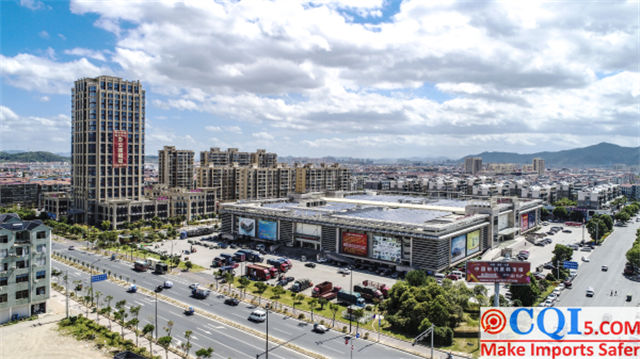
Change, technology, branding has become a number of textile enterprises to move to the middle and high end of the big move.
Upgrade equipment, transformation process, seeking a better position in the industrial chain. Shaoxing Haitong Printing and Dyeing Co., Ltd, the old plant is gone, a high-count, high-density fabric project with an investment of $ 23.8 million is under construction. Production capacity is the same as in the past, but the gross profit margin per meter of cloth dyeing and finishing has increased from 5% to 10%. At present, keqiao more than half of the printing and dyeing enterprises have been “on the horse” transformation and upgrading projects, more than 80% of the existing equipment to reach the international leading level.
High-end has to have brand support, Zhuji Boyi textile technology companies, reaching cooperation with European and American brands , the layout of the global market, sales are expected to increase from $ 47.61 million to $ 1.58 billion in 8 years ……
Moving to the middle and high end, for enterprises, also means repositioning in the industry chain. “Only on differentiated projects,” some companies told us that this is the government’s current way of controlling capacity, but doubts have not been eliminated: “If general fabrics sell well, do they also only do differentiated fabrics?”
According to the reporter’s investigation, fabrics, such as industrial intermediate products that are easily subject to the front and back ends,is trying to regain control of the market. Some fabric enterprises are cooperating with international brands, trying to lead the trend. Many enterprises that mainly focus on functional fabrics are also forming new material research and development teams and building new production lines.
In fact, today’s textile industry has transcended the impression of traditional industries and is becoming a fertile ground for new industries to cultivate, making the industrial chain form from linear chain to three-dimensional network transformation. Ling Yun believes that this is one of the signs of the textile industry is gradually moving toward modernization.
In the first half of this year, Shaoxing high-end equipment industry output value of $ 16.8 billion, new materials industry output value of $ 21.6 billion, and textile equipment, new materials is the key areas.
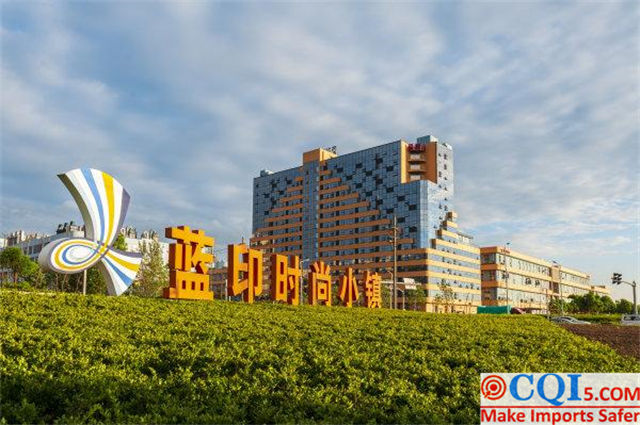
Reinventing the high point in innovation Reconstructing the value chain with the world stage as the fulcrum
“The core technology is actually in the spinning!” After 3 months of research on a piece of cloth produced by a Japanese company, Chen Mingxian, chairman of Shaoxing Dongjin Textile Company, lamented.
After more than 10 years of specializing in punching jacket fabric and becoming the supplier of more than 100 brands around the world, Chen Mingxian feels that the technology is not inferior, but after overcoming the difficulties of dyeing, laminating and weaving, his fabric still can only achieve the similarity of shape.
“To achieve the same characteristics, countless trials are needed, but the technical research and development capabilities of the partner companies cannot meet the demand.” Chen Mingxian said that the essence behind a silk is the insufficient degree of upstream and downstream synergy and the lack of high-end linking ability of the industry chain.
Uneven upstream and downstream enterprises can symbiosis and co-prosperity, is also affecting the competitiveness of the industry chain towards. The dynamic balance of the upstream and downstream of the industry chain is also being tested at this moment.
Zhuji Datang, Boyi company in charge of Xu Xuguang is also in trouble. Although the automatic sock machine produced by Zhuji enterprises has reached the world’s leading level, but mainly still flat machine, the lack of high-end functional sock machine. “The grade of raw materials affects the enhancement of the added value of products.” According to his observation, high-end socks in the global market share is very small, but profits account for most, “to create a full industrial chain is only a ‘shell’, we must really occupy the high point of the industrial chain.”
This high point is the high point of international competition with the world stage as the pivot point. Chen Mingxian said, “The value chain and industrial chain should be allowed to integrate a bit more closely and demonstrate a stronger value-added capability.”
Against the new benchmark, the lack of core technology breakthrough capability and the lack of collaborative innovation capability of the industry chain are commonly reflected by enterprises. Leading enterprises’ assistance, advantageous enterprises’ traction, government-enterprise linkage integration of complementary resources …… some new trends around the innovation chain and value chain layout of the industrial chain, is arising in parallel.
We have observed several industry leaders move frequently. In the field of chemical fiber, strong enterprises or shares in petrochemical, refining and chemical projects, to the upstream expansion of the industry chain, or acquisition of small and medium-sized enterprises for technological reform, to the downstream extension of the industry chain, in Keqiao, the annual production capacity of 1.2 million tons of chemical fiber, production capacity ranked seventh in the world Tian Sheng Chemical Fiber decisive move, this year, the acquisition of seven printing and dyeing companies, to enhance the degree of industry chain aggregation.
In the field of weaving, “Boyi” and “Dongjin” are the same, one is ready to start from the source of cotton cultivation, and build a small industrial chain that includes functional development of raw materials, original design, weaving, brand building, sales and display, while the other lays out a synthetic fiber project to build a “super factory” and form a self-loop chain in some parts.
In the view of many entrepreneurs, as long as it can enhance international competitiveness, it can be regarded as a model of strong chain and excellent chain. Chen Mingxian especially mentioned a few years ago, when the Shaoxing printing and dyeing industry was loosely linked to other links, often erupting in quality problems, then the government guided a change in model, encouraging dyeing factories that earn processing fees to also do distribution, the product quality has been significantly improved in the past two years.
For the construction of these small-scale industrial chains, all localities are happy to see their success, and they also reshape the spatial layout to build the ecological circle of modern textile industry.
Keqiao, Ma’an town, blue print fashion town. 3.5 square kilometers of land, has gathered 57 printing and dyeing projects, to achieve a sales value of $3.7 billion in 2019. Right now, with the new round of Shaoxing textile industry cross-zone agglomeration to enhance action, Yuecheng District, 34 printing and dyeing enterprises consisting of five major groups are being concentrated relocation. Water, electricity, steam (gas) and other supporting projects, synchronous start construction.
“In addition to printing and dyeing, chemical enterprises are also being cross-regional clustering to Shangyu.” According to reports, Shaoxing will also be “a cluster of a complex” integrated with universities, industrial research institutes, enterprise R & D centers and other innovation resources to enhance the competitiveness of regional industrial clusters, and promote the formation of a larger division of labor cooperation system.
At this time of changing market, innovation has long been a consensus among enterprises in the modern textile industry chain. The window of industrial modernization has come, they must stand on the high ground and open a new bureau in the change.
(I)China Zhejiang Modern Textile Industry Chain modernized industrial clusters are taking shape
Today should no longer be judged by the old concept of Zhejiang Province textile industry, in addition to the traditional sense of chemical fiber, weaving, dyeing, garments and other key links, with the continuous extension of the industrial chain, it has also derived from digital design, intelligent textile equipment, chemical additives, additives, new functional fabrics and other related industries. It can be said that this is no longer the pure sense of “traditional textile”, more suitable for the “modern textile” industry perspective, its future development of the industrial pattern is still worthy of further attention and research in the industry, the development of space is still very large.
Now the textiles made in Zhejiang are no longer the traditional sense of people’s clothing products. Functional, industrial fabrics, a variety of modified fibers are emerging, which is the result of textile enterprises to adapt to the changing needs of people’s lives, along this path, over the years, Zhejiang’s enterprises in sublimation, the industrial chain in sublimation, the cluster is also sublimation, out of a digital, networked, intelligent transformation and upgrading of the road.
Zhejiang’s textile and related industries have been the prototype of a modern industrial cluster. In view of the new trend of modern textile industry, as well as the characteristics of people’s clothing, food, housing and transportation closely linked, it is a realistic choice to build a trillion-dollar industry cluster, but also a vibrant and dynamic choice.
The daily consumption goods like textiles, such as clothing, food, housing and transportation, have a more stable market, after all, supported by people’s needs. The market of an industry, in the needs of people’s lives, but this demand is not static, following the changes to adapt to demand, which is the general direction of supply-side reform, but also the future of industrial competitiveness of a kind of evaluation scale.
(II) Forming competitive advantages in the double cycle
The impact of COVID-19 epidemic this year on the global manufacturing industry’s broken chain and supply is unprecedented, and people’s awareness of industrial chain security has become more profound. In order to avoid the problem of the risk of chain breakage and supply disconnection that may be brought by unexpected events, many places create self-centered regional industrial clusters, and the original international grand cycle is evolving into a domestic cycle as the main body and a domestic and international double cycle.
The formation of a viable double cycle, the development of modern industrial clusters is essential, that is to say, the product to functional, experience-oriented direction, processing technology to intelligent, green direction. At present, the textile industry transformation and upgrading of the outstanding shortcomings in the talent, the characteristics of the manifestation is the lack of technological innovation, product innovation, in meeting the needs of modern society, to guide social consumption and other aspects are still lacking, but there is still a lot of room for development.
(III) use the two hands to break out of the big market
Vibrant industries are not laid out subjectively by people, but enterprises rely closely on technological progress, in constant competition between the best and the worst, organic renewal out, including industry upstream and downstream connections, supporting the specialized division of labor and cooperation. Therefore, from an overall perspective, to enhance the competitiveness of industry clusters or industry chain supply chain, it is necessary to activate the power of the invisible hand of the market.
But this is not to say that the visible hand of the government is not needed. When the market fails, the visible hand is needed to step in. For example, the government should actively play a guiding role in the cultivation of small and micro enterprises, the creation of a good entrepreneurial environment, supporting the construction of public R & D platforms, the introduction of international high-end talent. Enterprises should also realize that the government can be relied on, but ultimately learn to grow up and break into the market on their own to win a competitive advantage in the market.
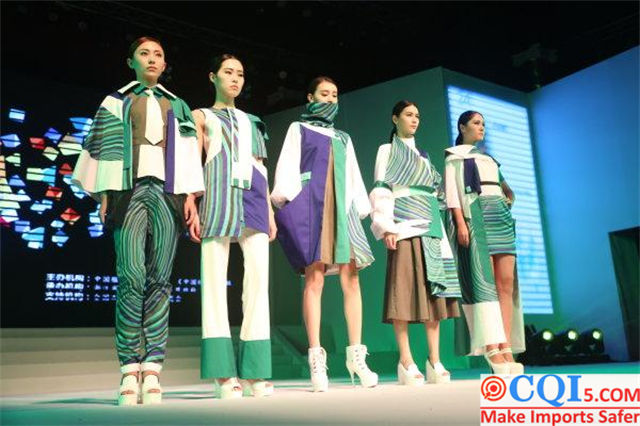
CQI5 is committed to providing importers worldwide with product quality inspection services that far exceed those of our peers. If you are planning to import or have imported from China or Southeast Asian countries, please contact us cs’@’cqipro.com to learn more about how we can make your imports safer.
Disclaimer:
CQI5 article information from the Internet and contributions, the copyright of which belongs to the original author, and only represents the views of the original author. This website is only responsible for sorting out, typesetting and editing the articles, reproduced for the purpose of spreading more information, does not imply that it endorses its views or proves the truthfulness, completeness and accuracy of its content, and therefore does not assume any legal responsibility.
The information contained in this article is for reference only and is not intended as direct advice for decision-making.
If we inadvertently violate your copyright, please inform us, after verification, we will immediately correct or delete the content according to the requirements of the copyright holder, thank you! Contact, email: copyright@cqipro.com
This website has the final right to interpret this statement.
Welcome to reprint, please be sure to keep information complete.


